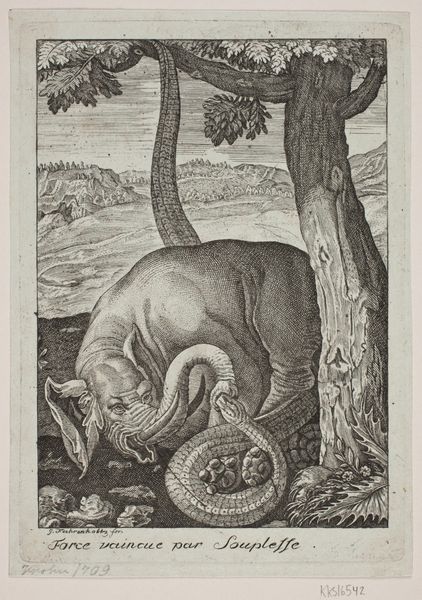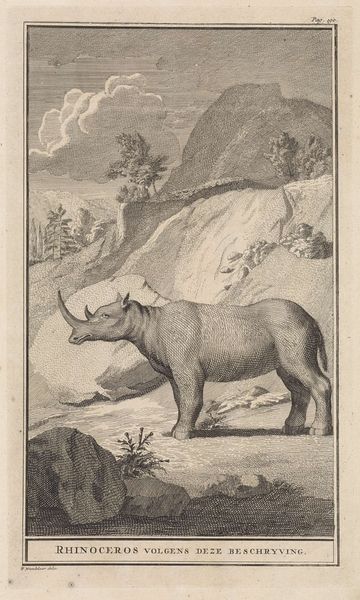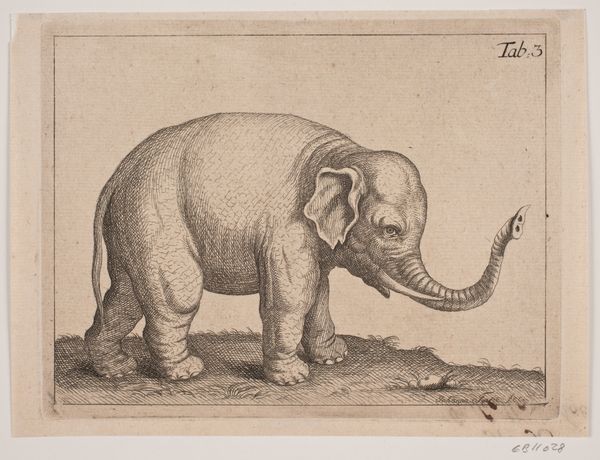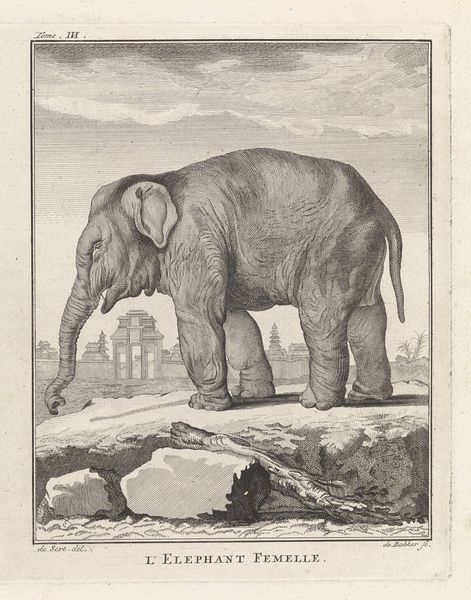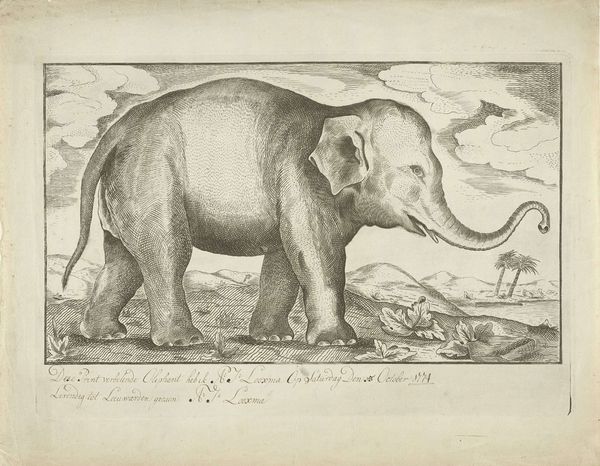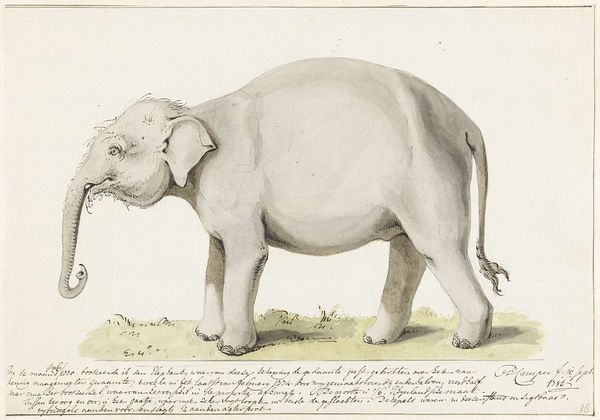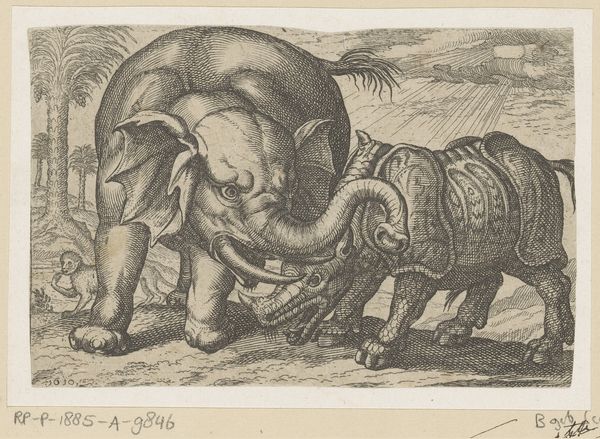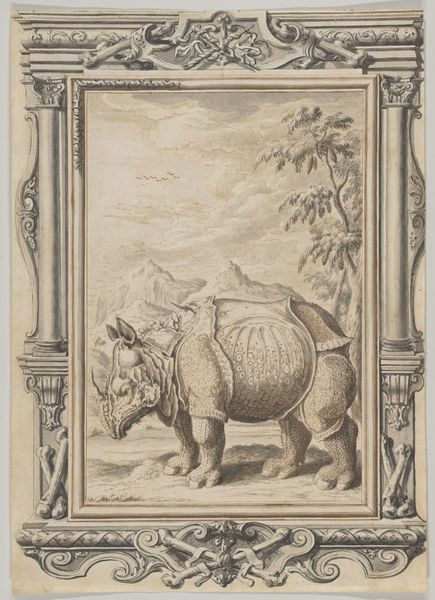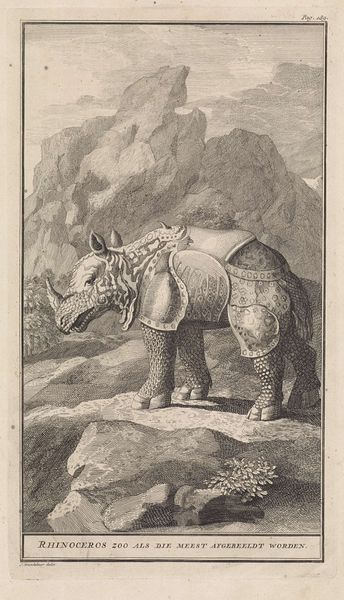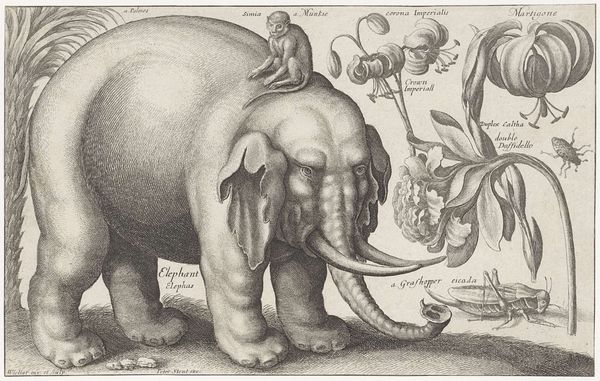
engraving
#
baroque
#
animal
#
old engraving style
#
landscape
#
engraving
Dimensions: height 295 mm, width 172 mm
Copyright: Rijks Museum: Open Domain
Curator: I find the image of an elephant in a mountain landscape so fascinating! This is a 1727 engraving by Jan Wandelaar, titled "Bergachtig landschap met een olifant," or "Mountainous landscape with an elephant." Editor: My initial feeling is a bit unsettling, actually. The elephant dominates the composition, appearing almost trapped against this somewhat crude rendering of mountains. Its gaze feels strangely intense. Curator: That's interesting. We have to remember that in the 18th century, accurate depictions of exotic animals weren't always possible. This image likely drew upon traveler's tales and perhaps earlier, stylized representations. The presence of the elephant signifies more than just its biological existence. It embodies power, foreign lands, and the ambitions of colonial powers to control these distant places and peoples. Editor: That’s precisely the symbolic chord it strikes for me! Elephants often represented wisdom, gentleness and royalty in various cultures, but there's also an underlying aspect of colonial imposition. Notice how the light emphasizes the animal. Its imposing size makes me think of dominance and perhaps the burdens that power brings, a symbol laden with contradictions. The elephant has appeared throughout art history, often representing complex meanings, power, even the exotic unknown. Curator: Yes, and placing the elephant within a detailed but somewhat unrealistic landscape is a typical feature of Baroque-era interest in combining the natural and the exotic for both aesthetic enjoyment and didactic purpose. Images like this served both to educate and to impress upon the viewer the sheer diversity and extent of the known world. Consider the location of its display, and you could speculate further that images such as these reinforce social heirarchies Editor: It prompts questions about what constitutes "natural." I also feel like the artist is working within artistic and political confines, not accurately reporting or representing a first-hand observation, instead drawing on symbolic registers. So for me the charm is not in this particular creature but in its echoes to something else. It's in this odd collision of detailed rendering with a kind of symbolic flattening that makes me keep looking. Curator: I agree entirely. Understanding its historic cultural context allows for the nuances of its intended meanings to resonate through time and the viewer’s unique historical understanding. Editor: Well, my brief encounter with this imposing elephant certainly reminds us how imagery acts as both a mirror and window. It allows us to glimpse into the past while simultaneously revealing our contemporary values and understandings.
Comments
No comments
Be the first to comment and join the conversation on the ultimate creative platform.
